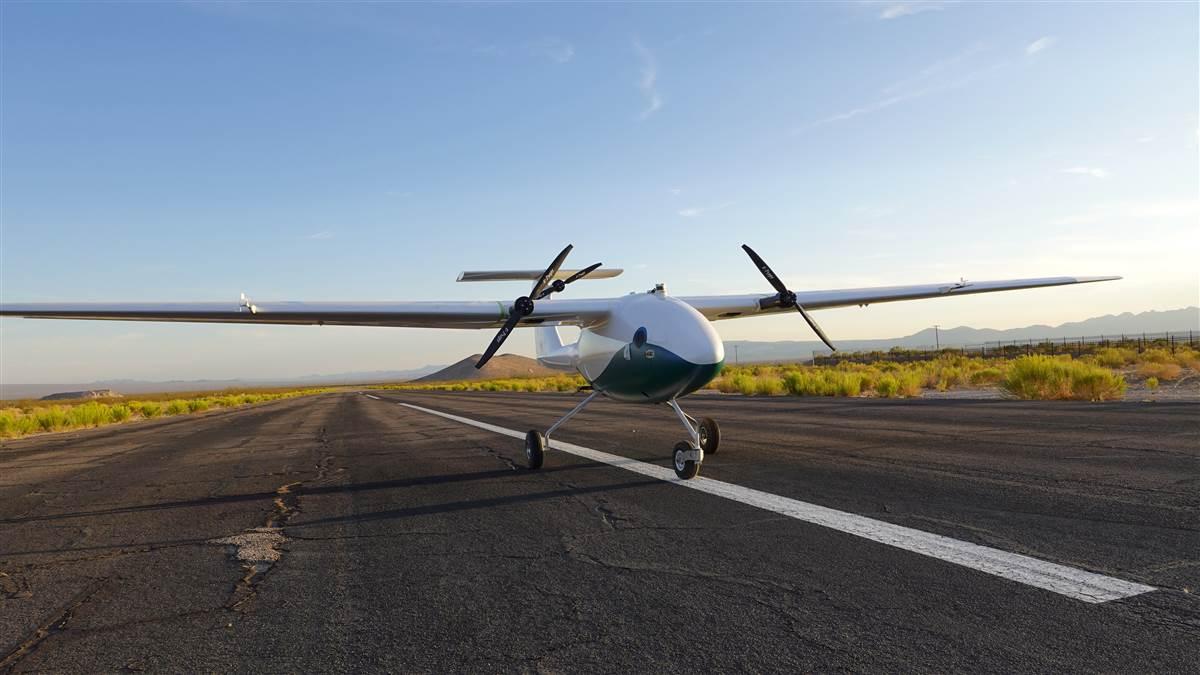CROP DUSTER DRONE: PYKA PELICAN
VOLTS FROM THE BLUE, AND CHEMICALS, TOO By Thomas A. Horne AOPA Article
But electrically powered, conventional-wing aircraft designs are already in service today.

Pipistrel’s Alpha Electro and Velis Electro—the latter having recently earned its EASA (European Union Aviation Safety Agency) certification—are two-seat trainers that readily come to mind. But there’s another design already on the job—working the fields, so to speak—in New Zealand. It’s the Pelican eSTOL cropduster, the product of Pyka Inc., an Oakland, California, company.
The New Zealand Pelican works for Pyka’s launch customer. It’s operated by West Farms, a company based in the Canterbury region of the South Island. More Pelicans are being built in Oakland at a rate of one per month. They’re designed and manufactured under ASTM guidelines for unmanned aircraft systems and built under an FAA exemption that addresses large drones. Pyka is cagey about the Pelican’s price. Michael Norcia, Pyka’s co-founder and CEO, said that the Pelican program is currently operated under a leasing model and as of November 3, 2020, he said he wasn’t able to discuss prices. Yet.
The Pelican uses three wing- and tail-mounted 20-kW (approximately 27-horsepower) motors, can take off and land in just 150 feet, and is fully autonomous. It weighs 1,125 pounds, has a 38-foot wingspan, can carry a 625-pound payload, and cruises at 78 knots; airspeed for crop dusting is 70 knots. It achieves this efficiency in large part because of its high aspect ratio wings, which are equipped with full-span flaps. Its flight computer, battery packs, and spray system are all designed by Pyka. Geographic and obstacle databases, along with precise tracking software, let the airplane spray chemicals at low altitude and on specific ground tracks, all the while adjusting for crosswind effects. At a spray rate of five gallons an acre, the Pelican can cover 85 acres in an hour, including the time to fill its load and swap out batteries. At two gallons an acre, it can cover 135 acres an hour. Battery endurance is 30 minutes.
The Pelican demonstrates the advantages of having conventional fixed wings over multiple rotors providing vectored vertical thrust. Wings provide most of the lift, which saves precious battery power. Wings also permit glides after a loss of power. In a larger sense, the Pelican demonstrates an alternative path for electric aviation’s future. By using electrical power in an eSTOL application, bigger loads and longer endurances may be possible using extremely short runways or other launch areas, or even threatened or closed airports.
A natural progression suggests a passenger-carrying version of the Pelican. And there is such a design in the works. However, to carry passengers a pilot would be needed—at least initially, until regulations are modified to include autonomous passenger flights. And the Pelican design would certainly need to be a bit larger to accommodate passengers. That means a totally new airframe, and still more certification hoops to jump through. But for the near future, the Pelican is earning its stripes, and operational experience—as a purpose-built ag drone, and a very nice one at that.


